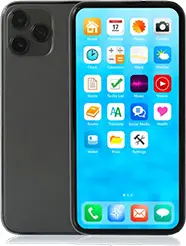Losing Medicaid coverage can be stressful, especially when you rely on it for essential healthcare services. If you’ve been disenrolled, you might be wondering what to do next and how to get back on Medicaid if it was a mistake or if you qualify again.
This guide will explain why you may be disenrolled from Medicaid, what to do afterward, and how to explore alternatives or regain coverage. As a bonus, we’ll highlight how Medicaid benefits can help you qualify for the Lifeline Program, offering free or discounted cell phone service.
Why Do States Disenroll Medicaid Enrollees?
Being disenrolled from Medicaid often comes as a surprise, but understanding why it happens can help you take the right steps to regain coverage.
The Expiration of Continuous Coverage
During the COVID-19 pandemic, many states implemented a continuous enrollment provision, which prevented Medicaid recipients from being dropped during eligibility reviews. However, with this provision ending, millions of people are now being reevaluated for eligibility. If your state found you no longer meet the qualifications for enrollment or didn’t receive your renewal enrollment documents, you may have been disenrolled.
The Redetermination Process
States periodically check Medicaid eligibility for certain enrollees through a process called redetermination. If you miss important deadlines or fail to submit required documents, you could lose your coverage, even if you still qualify. Common reasons for disenrollment include:
Failure to submit renewal forms.
Missing or incomplete paperwork.
Returned mail indicating an address change.
If you’ve been disenrolled, it’s essential to act quickly to determine whether it was a mistake or due to procedural compliance issues.

What Happens After You’re Disenrolled from Medicaid?
Losing Medicaid coverage means you no longer have access to the essential services it provides or health plans such as doctor visits, prescription medications, and preventive care. This can leave you uninsured and financially vulnerable.
Without Medicaid enrollment, you and your children may face higher out-of-pocket costs for medical care. This can create financial strain for families, especially if someone requires ongoing treatment or medications.
The good news is that there are options available to help you bridge the gap in coverage.
Affordable Alternatives to Medicaid Coverage
If you’ve been disenrolled from Medicaid, you don’t have to go without health care. Several alternatives can provide the support you need.
Affordable Care Act (ACA) Marketplace Plans
The ACA marketplace offers subsidized health insurance plans designed for low-income individuals and families. You may qualify for significant premium reductions or even zero-premium plans depending on your income.
Visit Healthcare.gov to explore available options in your area.
Community Health Centers
Federally funded community health centers provide low-cost or free medical services, including primary care, dental care, and mental health support. These clinics are an excellent resource for individuals who are temporarily uninsured. Use the HRSA Health Center Finder to locate a clinic near you.
State and Local Programs
Many states offer safety-net programs to help individuals who don’t qualify for Medicaid. These programs may provide discounted care, prescription assistance, or other health services. Contact your local Department of Health or Social Services office to learn more.
Steps to Get Back on Medicaid Services
If you believe you still qualify for Medicaid services or were disenrolled in error, it’s possible to regain your coverage. Here’s what you need to do:
Check Your Eligibility
First, review your eligibility based on factors like income, household size, and health needs. Medicaid programs vary by state, so check your state’s specific requirements on their Medicaid website.
Respond to Disenrollment Notices
If you received a notice of disenrollment, read it carefully. It will explain why your coverage ended and what steps to take next. Respond promptly to avoid long gaps in coverage.
Submit Renewal or Appeal Forms
If your disenrollment was due to incomplete or missing paperwork, gather the required documents and submit them as soon as possible. This might include proof of income, residency, or family size. Contact your state’s Medicaid office for guidance and help with submitting an appeal if you think a mistake was made.
Seek Assistance From Community Organizations
Many nonprofits and advocacy groups assist individuals with Medicaid applications and renewals. They can help you complete forms, understand eligibility requirements, and communicate with Medicaid offices. Use directories like Findhelp.org to locate assistance in your area.

How Medicaid Helps You Qualify for Lifeline
Did you know that being enrolled in Medicaid makes you eligible for the Lifeline Program? Lifeline is a federal program that provides free or discounted cell phone and internet service to low-income individuals.
Lifeline Benefits for Medicaid Recipients from EASY Wireless
When you’re enrolled in Medicaid, you automatically qualify for Lifeline. Benefits often include:
Free smartphone
Free monthly talk, text, and data plans.
Reliable connectivity to stay in touch with health care providers, employers, and family.
To apply for Lifeline, check out EASY Wireless, a trusted provider offering Lifeline services.
The Importance of Staying Connected
Losing Medicaid coverage can be overwhelming, but staying connected is key to finding alternatives and getting back on track. A reliable phone and internet connection allow you to:
Receive important renewal forms and notifications.
Stay in touch with Medicaid offices and community health resources.
Access telehealth services and online health information.
EASY Wireless provides free and affordable plans for those who qualify, ensuring you never miss critical updates about your health care coverage.
Visit EASY Wireless to learn more about our Lifeline and prepaid options.
Reapply for Medicaid Today and Protect Your Health
Being disenrolled from Medicaid doesn’t mean you’re out of options. Whether you explore marketplace plans, community health centers, or state programs, you can maintain access to health care. If you still qualify for Medicaid, act quickly to reapply or appeal your disenrollment to avoid gaps in coverage.
Remember, staying connected is essential for accessing these resources. EASY Wireless can provide the tools you need to stay informed, apply for benefits, and maintain communication with the support networks that matter most. Take action today to secure your health care and ensure peace of mind for yourself and your family.


